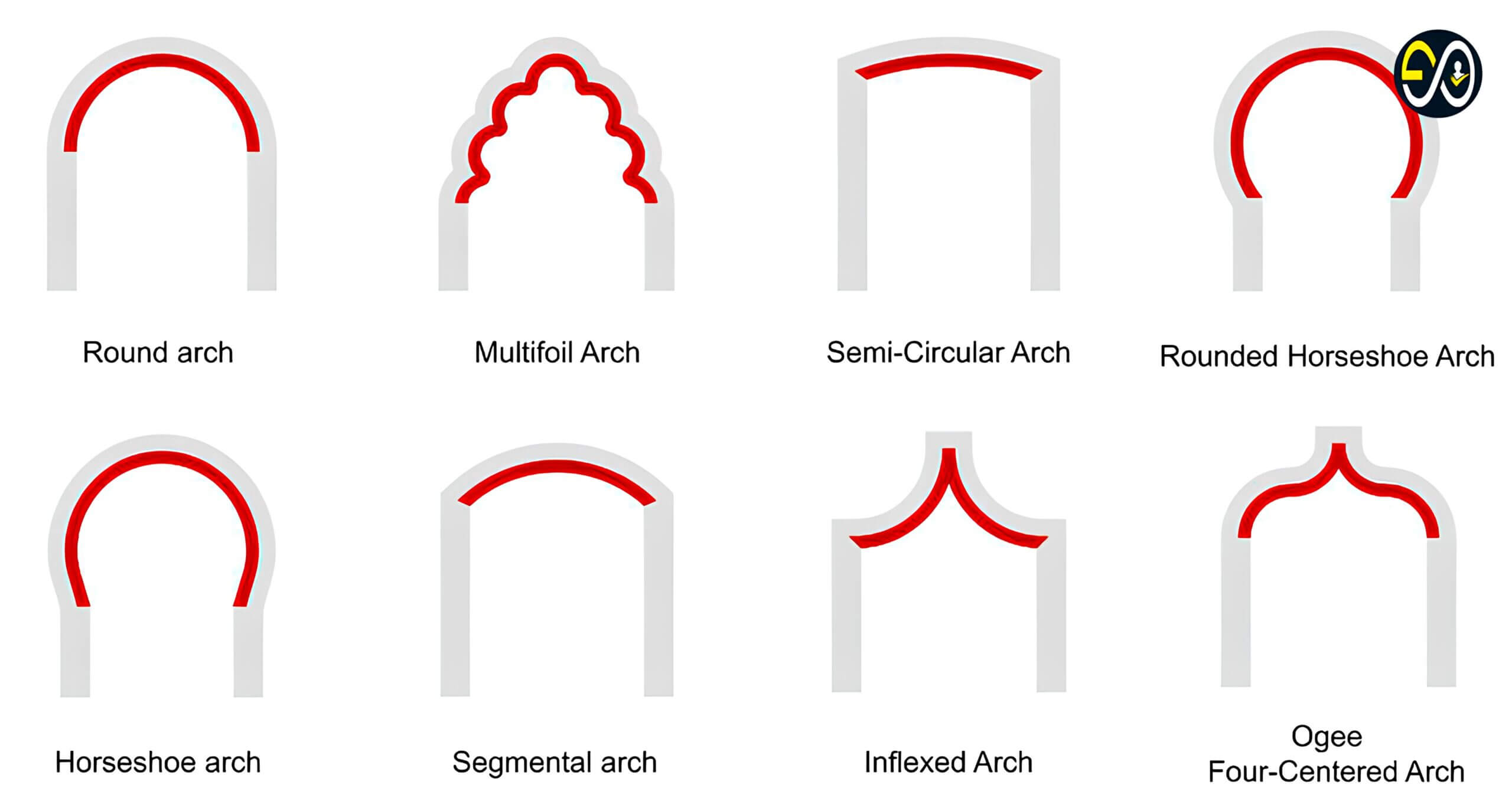
Arches have been an integral part of architectural design for thousands of years. They are not just aesthetically pleasing but also structurally sound, allowing buildings to distribute weight efficiently. From ancient Roman aqueducts to modern bridges, arches have proven their versatility and endurance.
Understanding the Basics of Arches
Structural Advantages of Arches
One of the main reasons arches have stood the test of time is their structural advantage. Unlike straight beams, which rely on compressive forces, arches naturally disperse weight and pressure away from the center, allowing for longer spans and stronger structures.
Key Components of an Arch
Every arch, regardless of its design, consists of key elements:
- Keystone: The central stone at the top that locks the arch in place.
- Voussoirs: The wedge-shaped stones that form the curve.
- Abutments: The supporting structure at the base of the arch.
Types of Arches
1. Round Arch (Roman Arch)
The round arch, also known as the Roman arch, is one of the most iconic and enduring designs in architecture. Its simple yet effective structure has been used for millennia and remains a staple in modern construction.
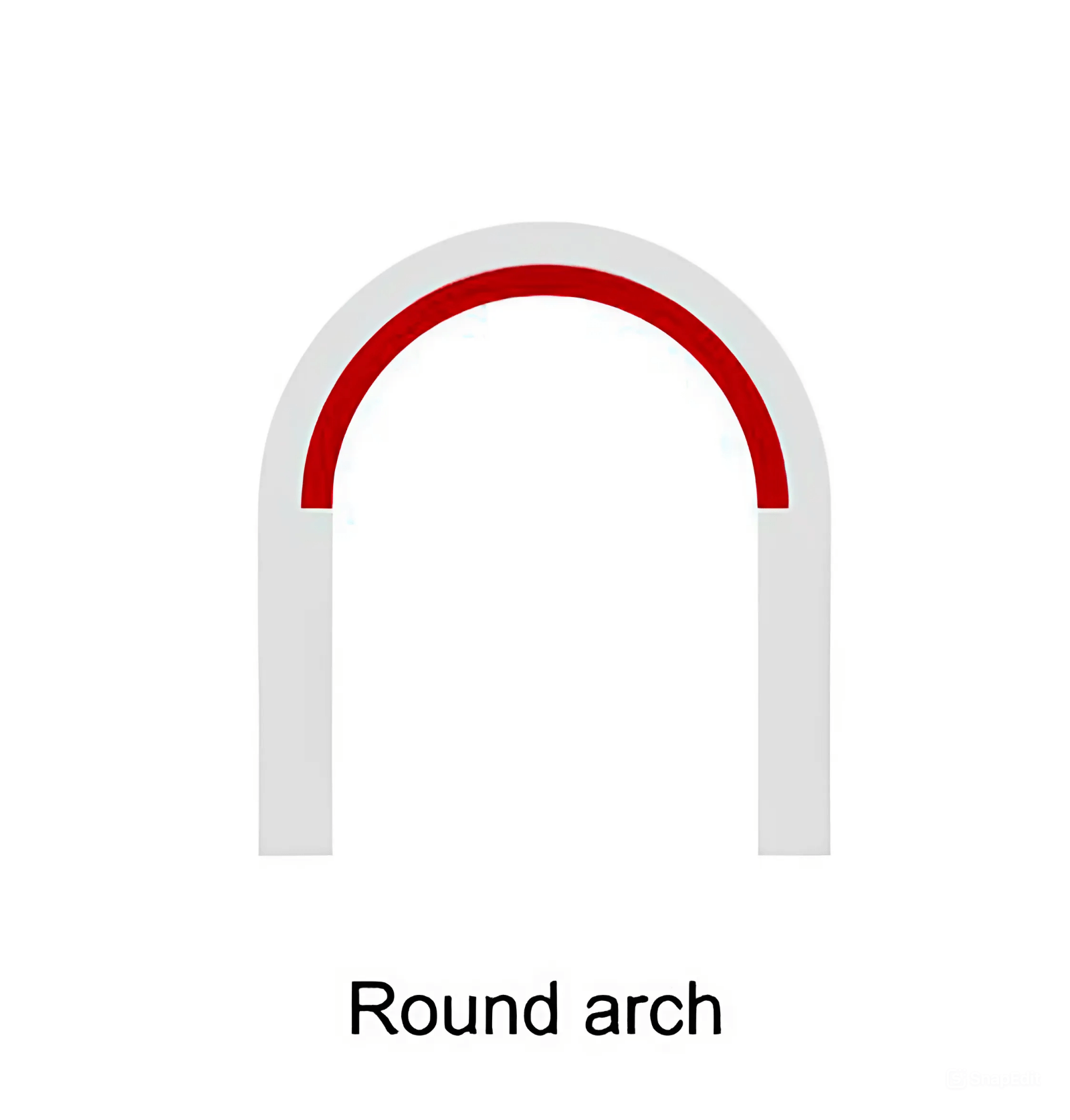
Structure and Design
The round arch is characterized by its smooth, semi-circular shape. It is constructed using wedge-shaped stones called voussoirs, which are arranged in a curved pattern. The keystone, located at the top of the arch, locks the structure in place and ensures its stability.
Famous Examples
Some of the most famous examples of round arches can be found in ancient Roman architecture. The Colosseum in Rome, with its rows of perfectly proportioned arches, is a testament to the enduring appeal of this design.
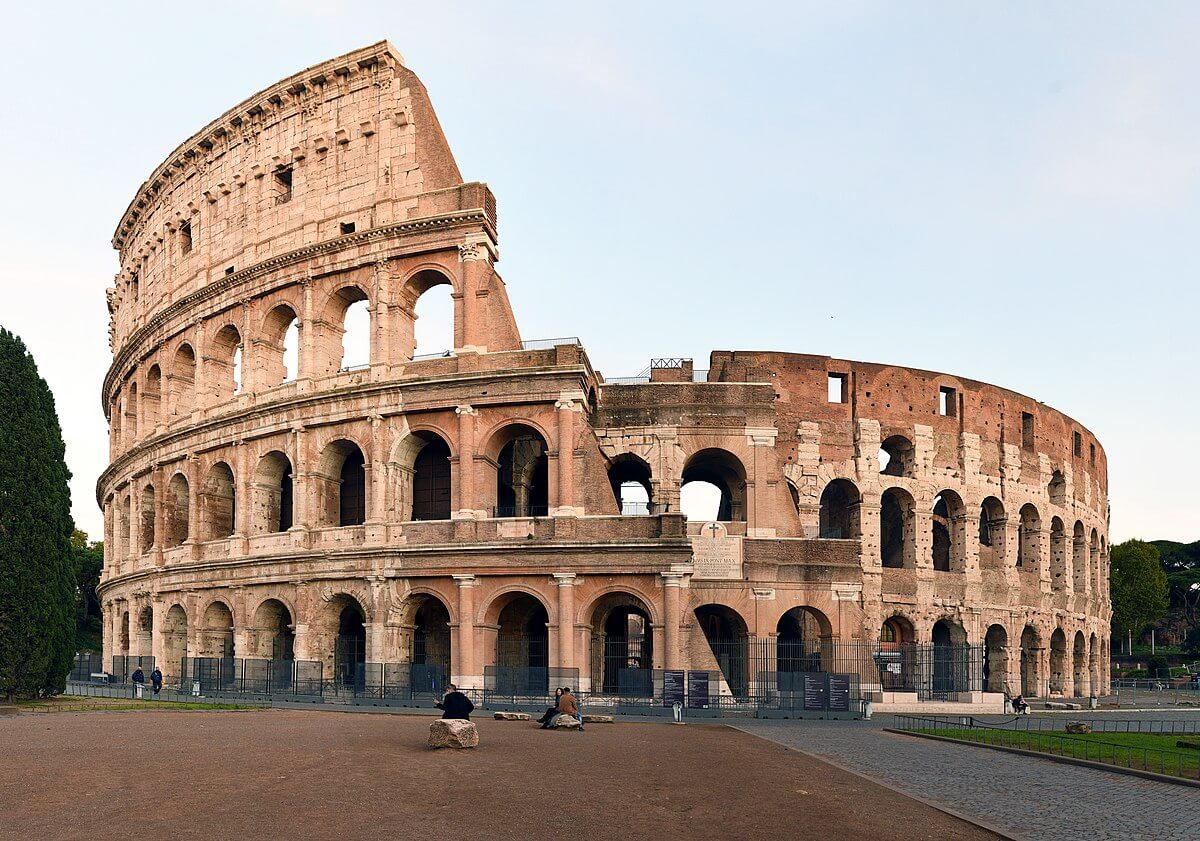
2. Multifoil Arch
The multifoil arch is a stunning example of the creativity and artistry that can be achieved with arch design. This arch type features multiple lobes or foils, creating a scalloped or petal-like effect.
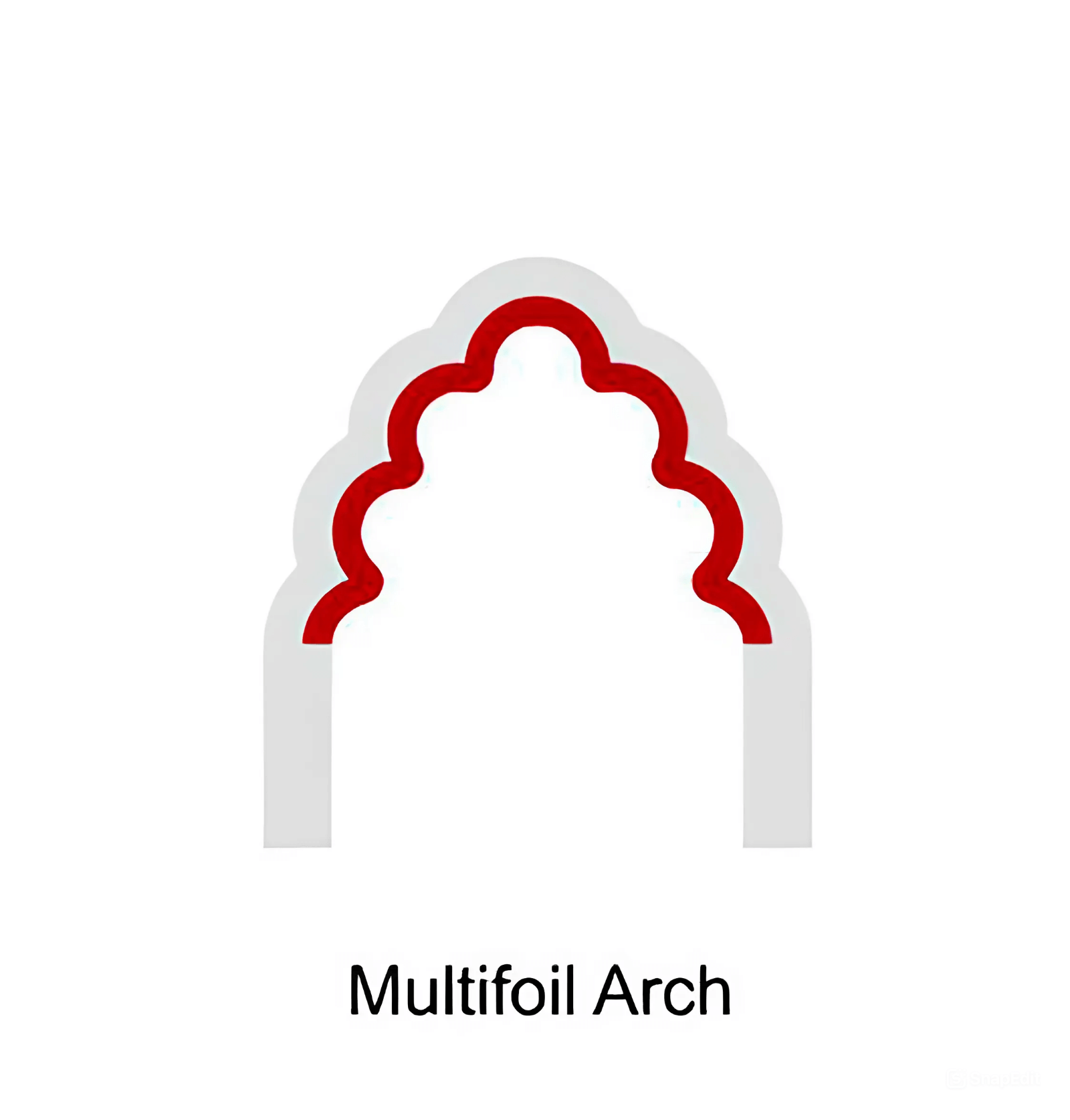
Structure and Design
The multifoil arch is composed of several overlapping arcs, giving it a decorative and intricate appearance. This design is often associated with Islamic architecture, where it is used to adorn mosques, palaces, and other religious buildings.
Influence on Islamic Architecture
The multifoil arch has profoundly influenced Islamic architecture, particularly during the Moorish period. The Alhambra in Spain is a prime example of how this arch design can be used to create breathtakingly beautiful structures.
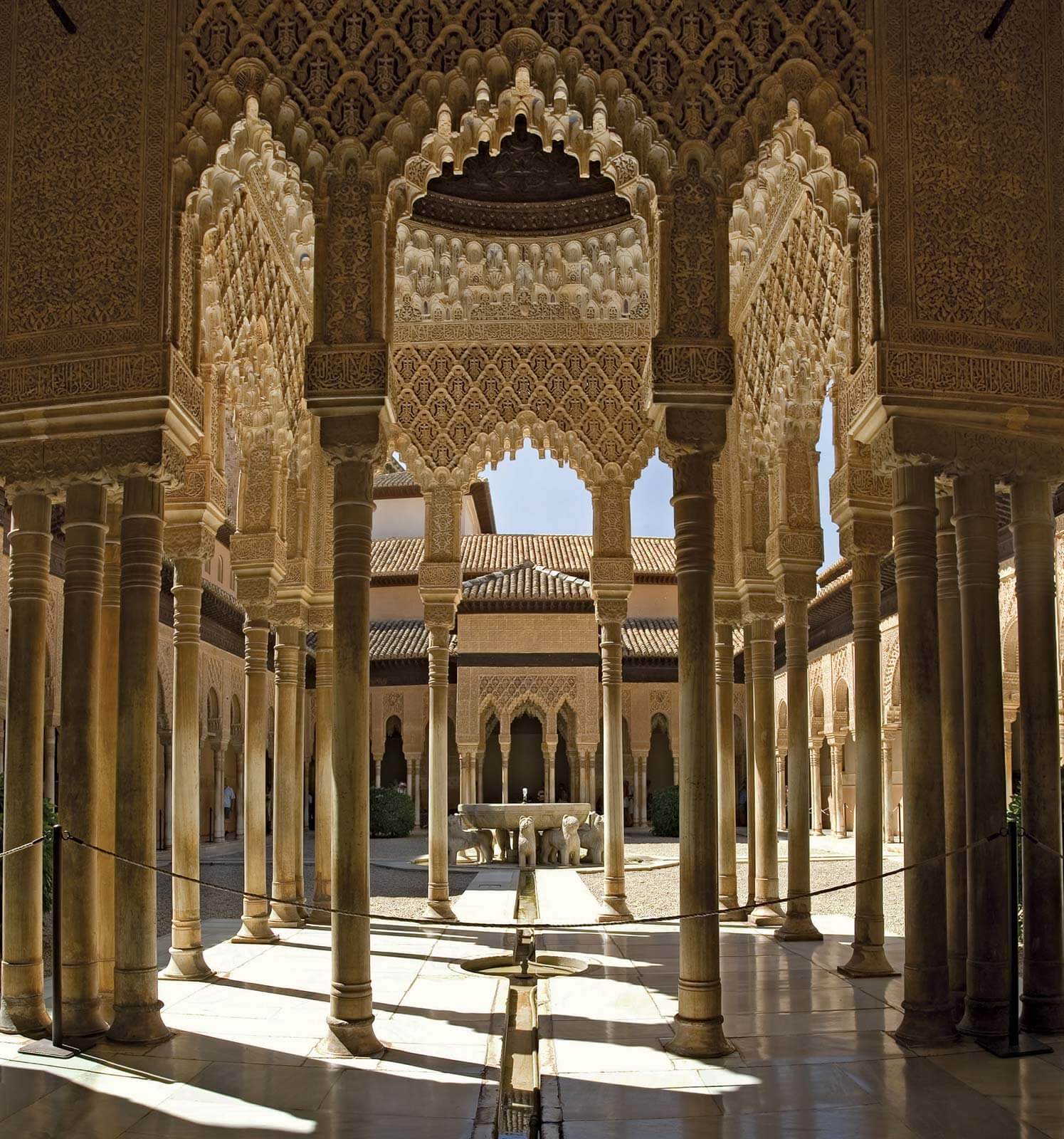
3. Semi-Circular Arch
The semi-circular arch is similar to the round arch but with a slightly different shape. As the name suggests, it forms a perfect half-circle, giving it a more balanced and symmetrical appearance.
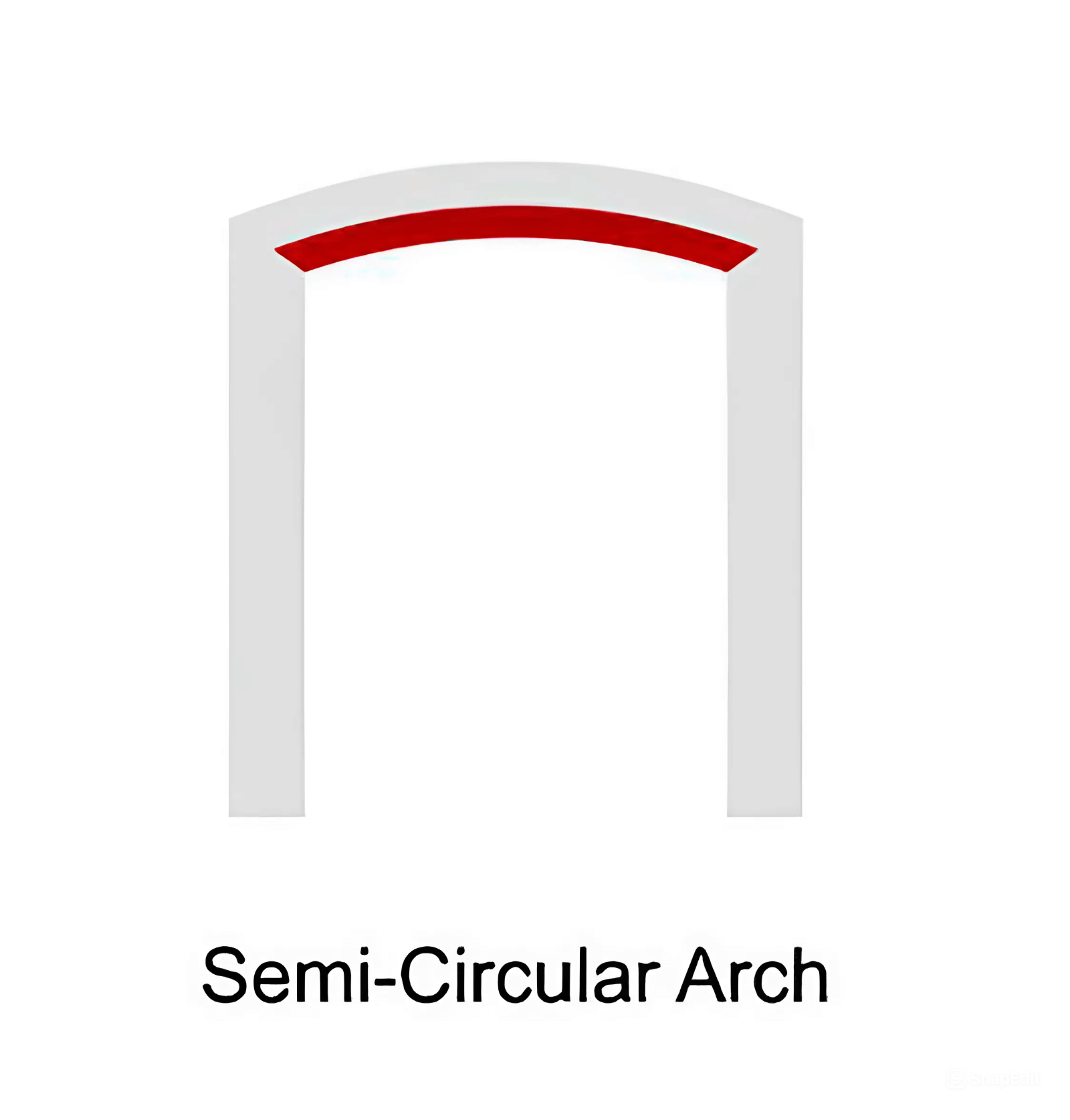
Structure and Design
The semi-circular arch is constructed using a series of voussoirs arranged in a half-circle. Its simple and elegant design makes it a popular choice for doorways, windows, and bridges.
Common Usage
Semi-circular arches are commonly used in Romanesque architecture, where they can be found in churches, castles, and fortifications. Their strong and stable design makes them ideal for supporting heavy loads.
4. Rounded Horseshoe Arch
The rounded horseshoe arch is a distinctive and eye-catching design that features a rounded top and a curved, horseshoe-like shape. This arch is often associated with Islamic and Moorish architecture, where it is used to create dramatic and visually striking entrances.

Structure and Design
The rounded horseshoe arch is similar to the round arch but with a more pronounced curve at the base. This gives it a unique and dynamic appearance, making it a popular choice for decorative and ceremonial purposes.
Historical Context
The rounded horseshoe arch can be traced back to ancient Persia and was later adopted by the Moors during their conquest of Spain. It remains a prominent feature in many Islamic architectural masterpieces, such as the Great Mosque of Cordoba.
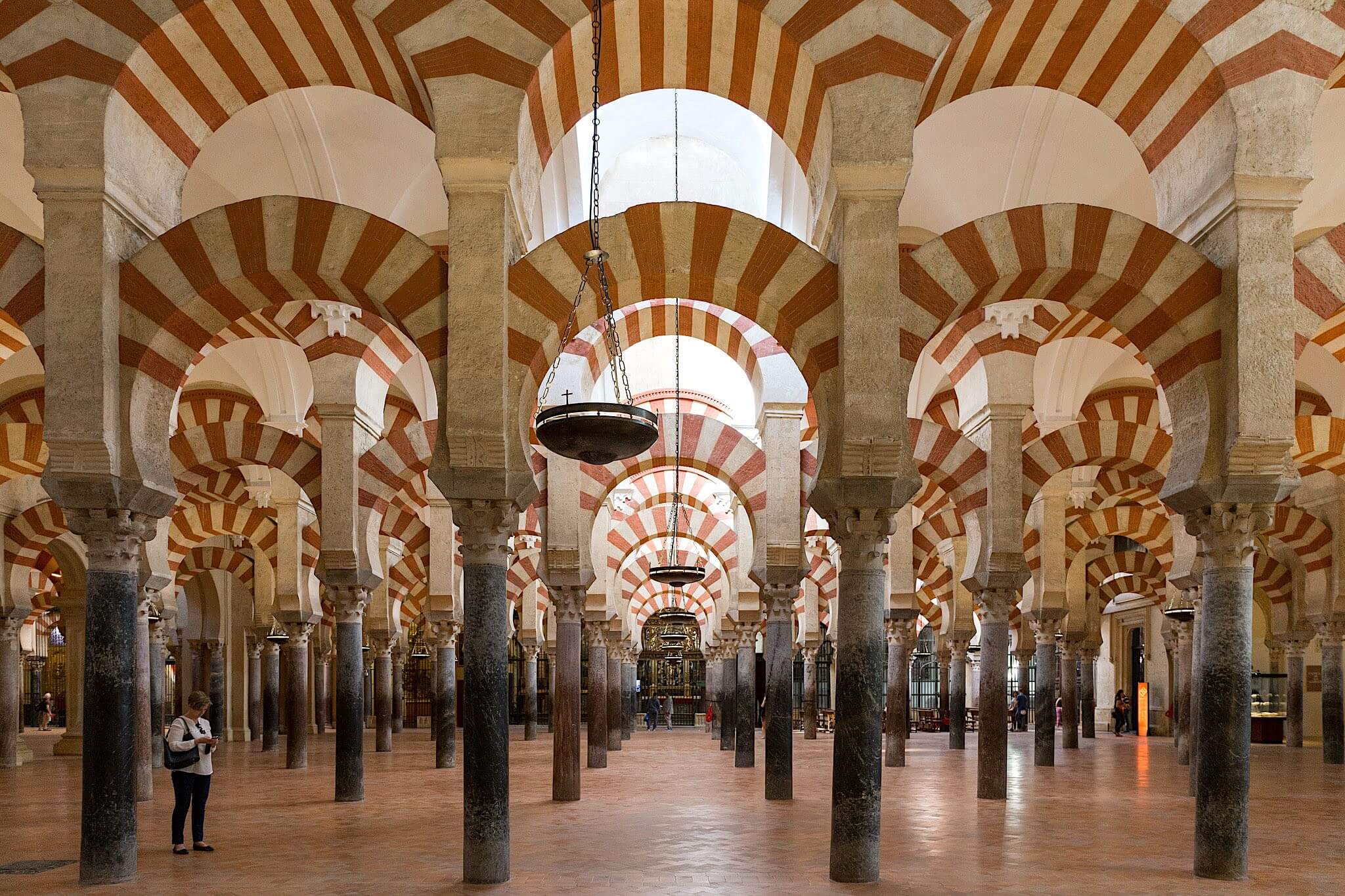
5. Horseshoe Arch
The horseshoe arch is one of the most recognizable and culturally significant arch designs. Its unique shape, which resembles a horseshoe, gives it a distinctive and memorable appearance.

Structure and Design
The horseshoe arch is characterized by its curved sides and rounded top, which extend beyond the width of the opening. This design creates a sense of grandeur and elegance, making it a popular choice for religious and ceremonial buildings.
Cultural Significance
The horseshoe arch is closely associated with Islamic architecture, particularly in the Moorish and Byzantine styles. It is often used in mosques and palaces to create a sense of reverence and awe.
6. Segmental Arch
The segmental arch is a more modern and functional design that is often used in bridges and tunnels. This arch is constructed using a segment of a circle rather than a full semi-circle, giving it a flatter and more practical shape.
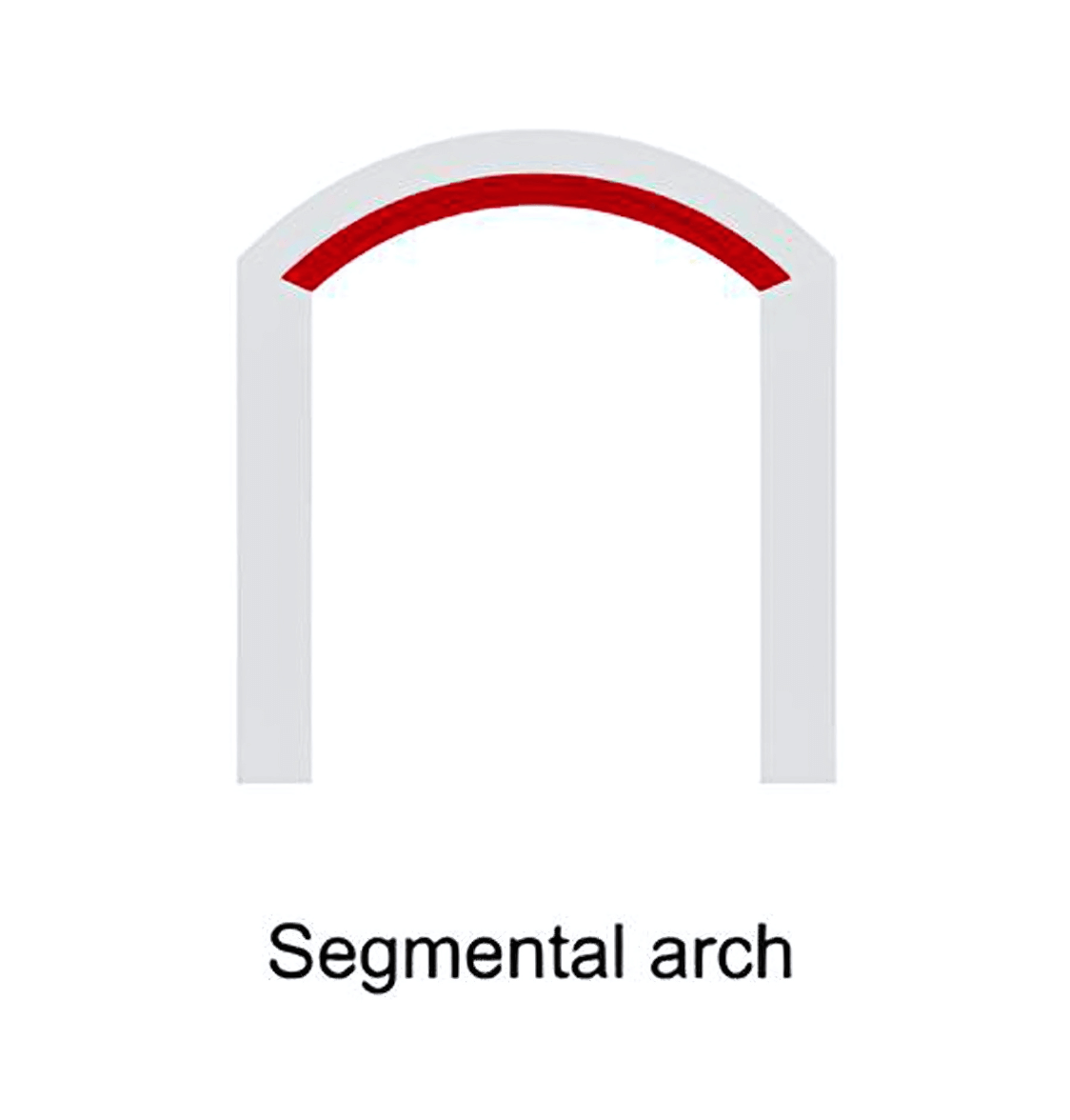
Structure and Design
The segmental arch is designed to distribute weight evenly across its span, making it ideal for supporting heavy loads. Its simple and efficient design makes it a popular choice in modern construction.
Modern Applications
Segmental arches are commonly used in bridge construction, where they provide the necessary strength and stability to support vehicles and pedestrians. They are also used in tunnels and culverts, where their low profile allows for easy passage.
7. Inflexed Arch
The inflexed arch is a unique and visually striking design that features a curved, inward-pointing shape. This arch is often used in Gothic architecture, where it adds a sense of drama and intensity to the structure.
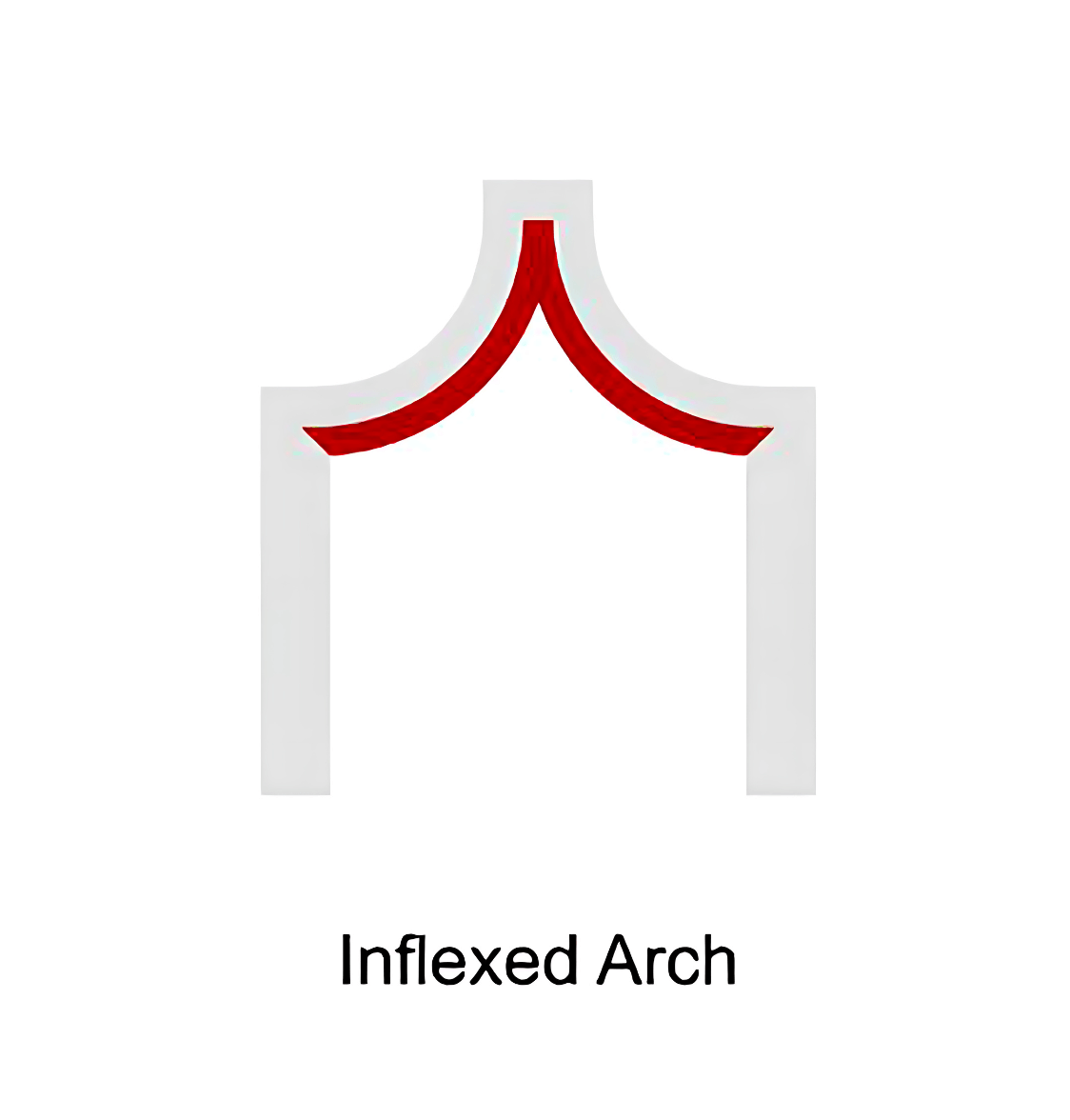
Structure and Design
The inflexed arch is composed of two curved segments that meet at a central point, creating a sharp and angular appearance. This design is both functional and decorative, making it a popular choice for windows and doorways.
Where to Find These Arches
Inflexed arches can be found in many Gothic cathedrals and churches, where they are used to create intricate and visually stunning facades. The Cathedral of Notre-Dame in Paris is a prime example of how inflexed arches can be used to create a sense of grandeur and beauty.
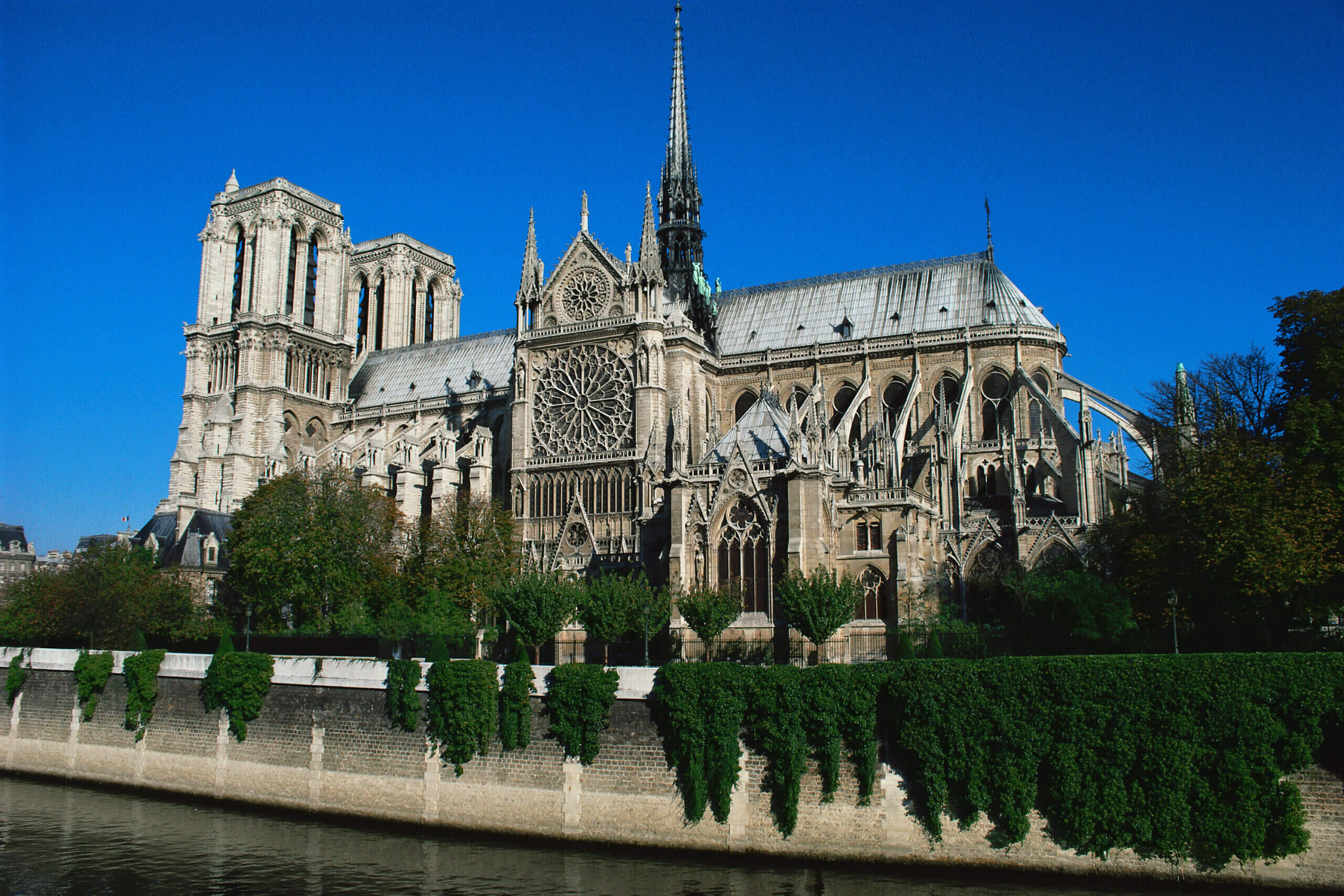
8. Ogee Four-Centered Arch
The ogee four-centered arch is an intricate and elegant design that features a double curve, creating an S-shaped profile. This arch is often associated with Gothic and Tudor architecture, where it is used to add a sense of refinement and sophistication to the structure.
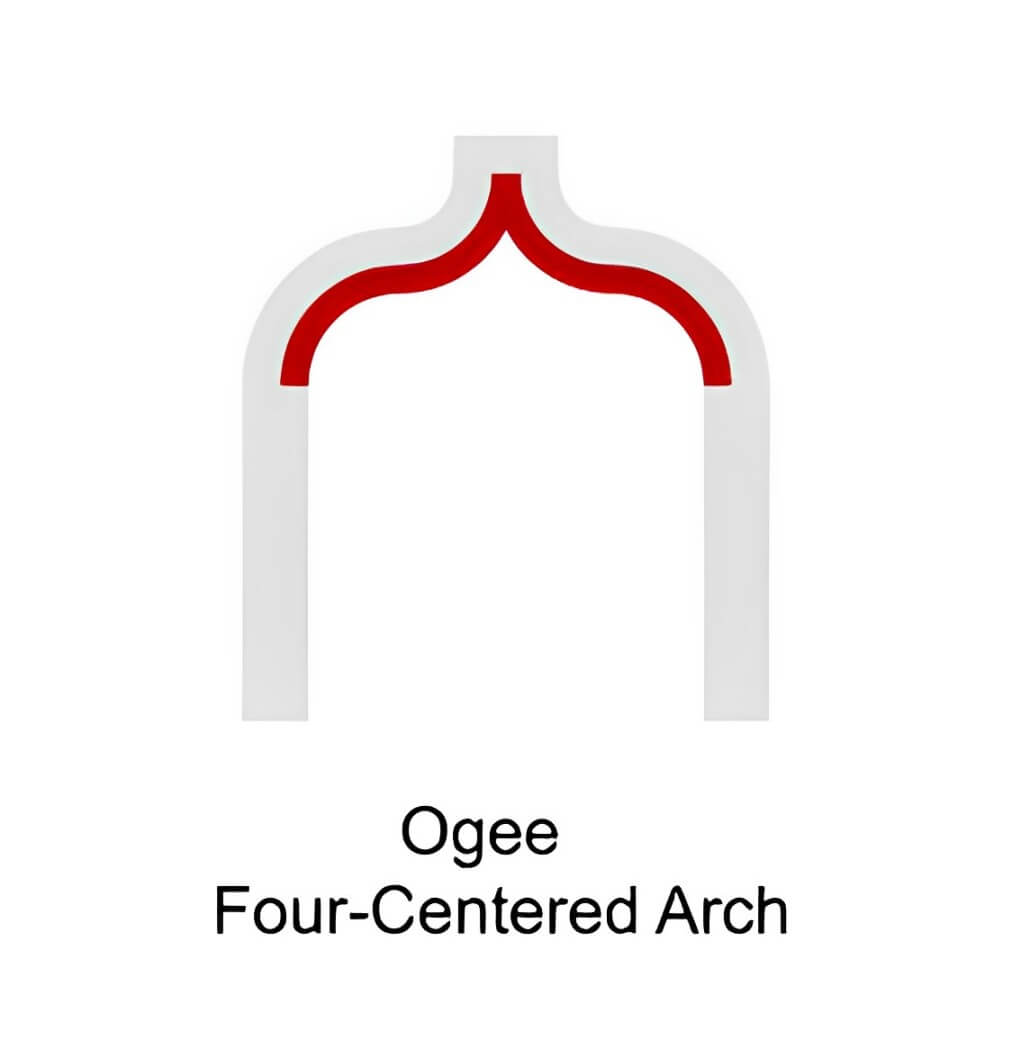
Structure and Design
The ogee four-centered arch is composed of two opposing curves that create a smooth and continuous line. This design is both visually pleasing and structurally sound, making it a popular choice for decorative purposes.
Gothic Architecture and the Ogee Arch
The ogee arch is a defining feature of Gothic architecture, where it is used to create intricate and elaborate facades. It can be found in many famous Gothic structures, such as the Salisbury Cathedral in England.
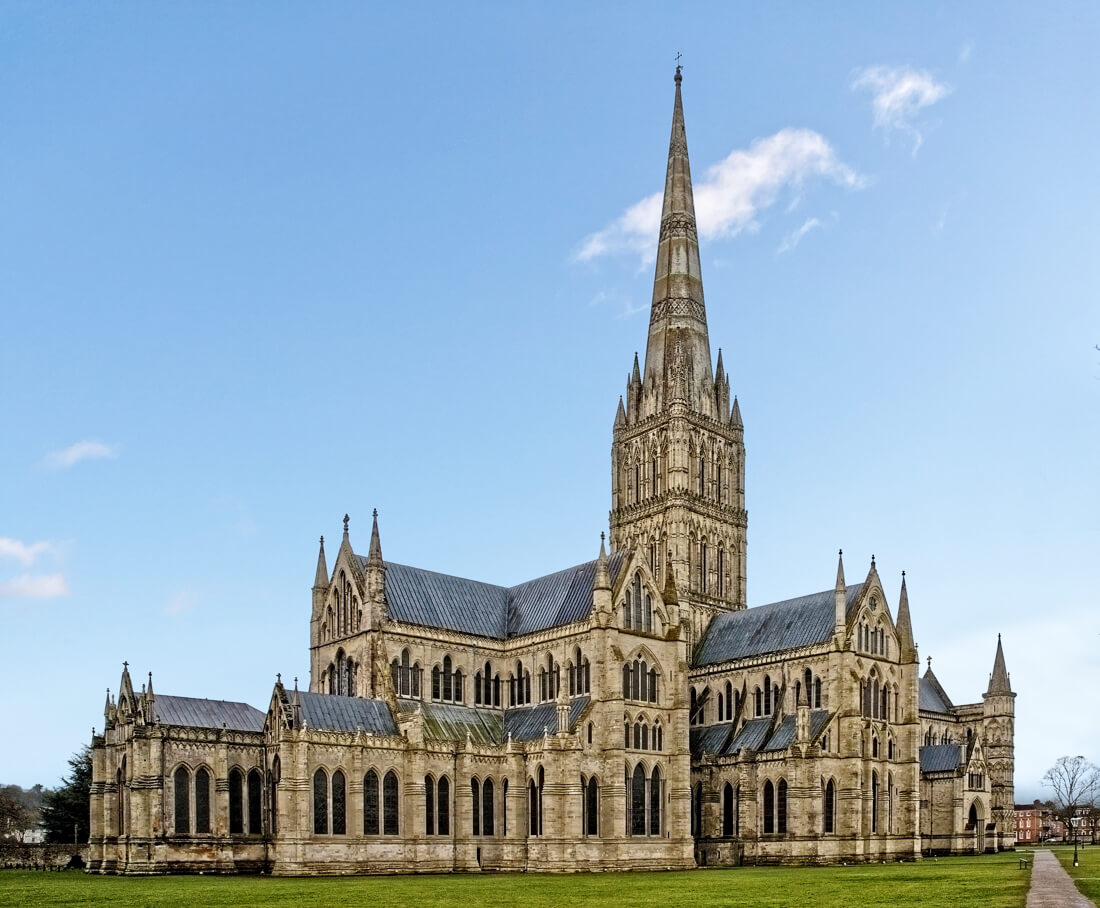
9. Pointed Trefoil Arch
The pointed trefoil arch is a distinctive and symbolic design that features three overlapping arcs, creating a clover-like shape. This arch is often used in religious architecture, where it symbolizes the Holy Trinity.
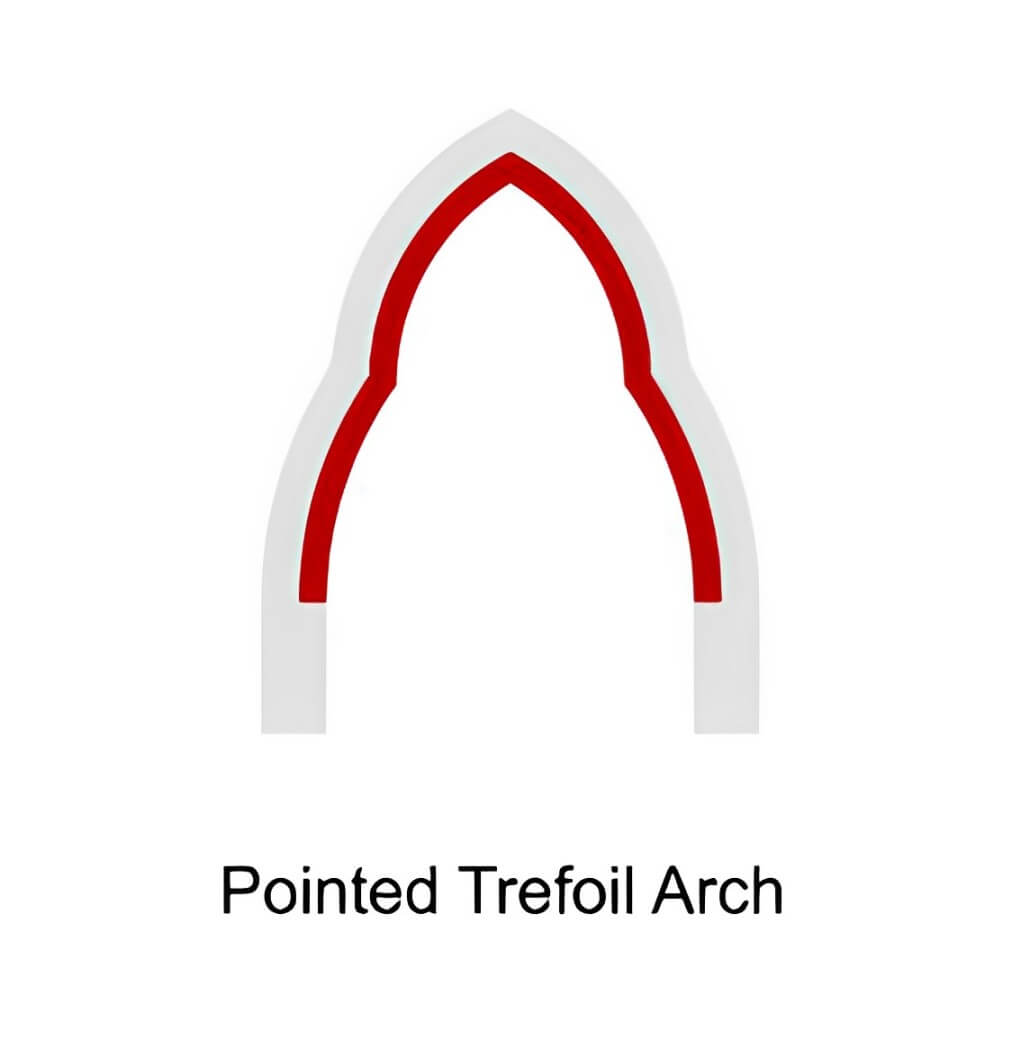
Structure and Design
The pointed trefoil arch is composed of three intersecting arcs, with the central arc rising to a point. This design is both elegant and meaningful, making it a popular choice for churches and cathedrals.
Symbolism and Uses
The pointed trefoil arch is often used in Christian architecture, where it represents the Holy Trinity. It can be found in many Gothic and Romanesque churches, where it adds a sense of reverence and spirituality to the structure.
10. Lancet Arch
The lancet arch is a tall and narrow design that is often associated with Gothic architecture. This arch is characterized by its sharp, pointed shape, which gives it a sense of height and grandeur.

Structure and Design
The lancet arch is composed of two straight sides that meet at a sharp point, creating a narrow and elongated profile. This design is both elegant and functional, making it a popular choice for windows and doorways.
Relation to Gothic Architecture
The lancet arch is a defining feature of Gothic architecture, where it is used to create tall and dramatic facades. It can be found in many famous Gothic structures, such as the Chartres Cathedral in France.
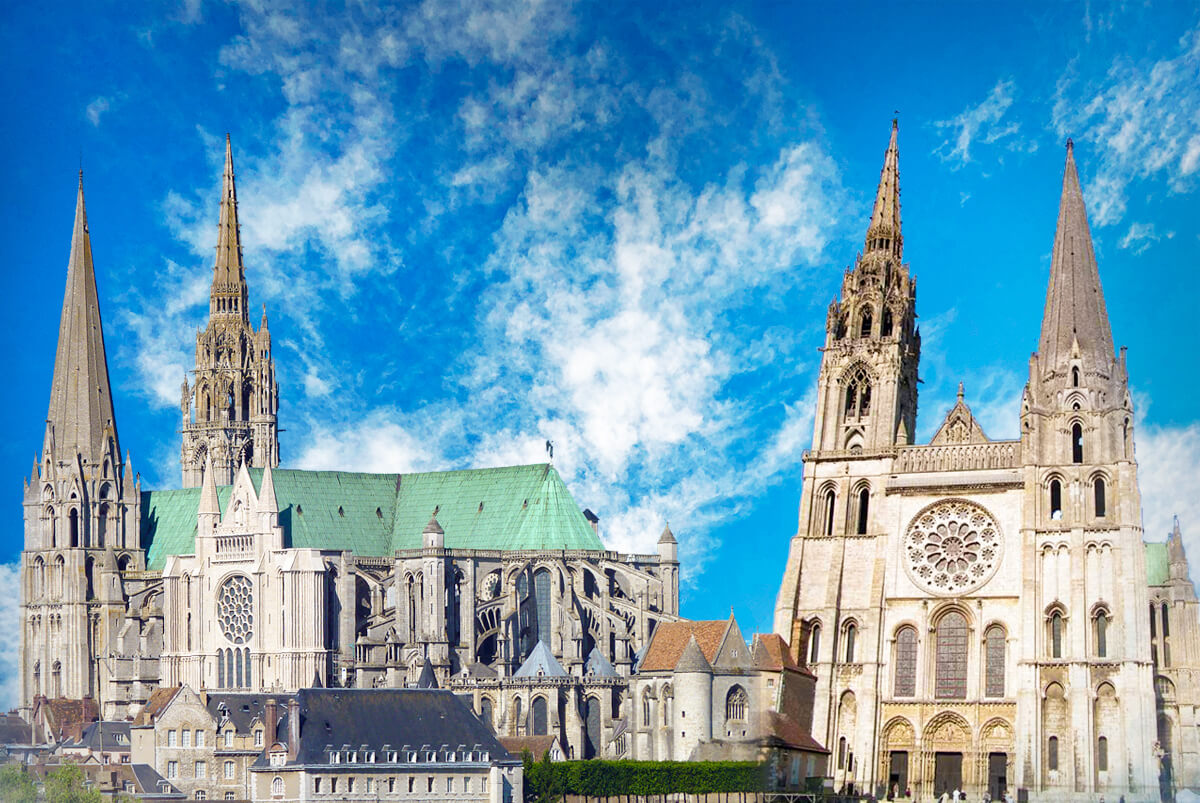
11. Round Rampant Arch
The round rampant arch is a unique and dynamic design that features a curved and asymmetrical shape. This arch is often used in medieval and Gothic architecture, where it adds a sense of movement and energy to the structure.
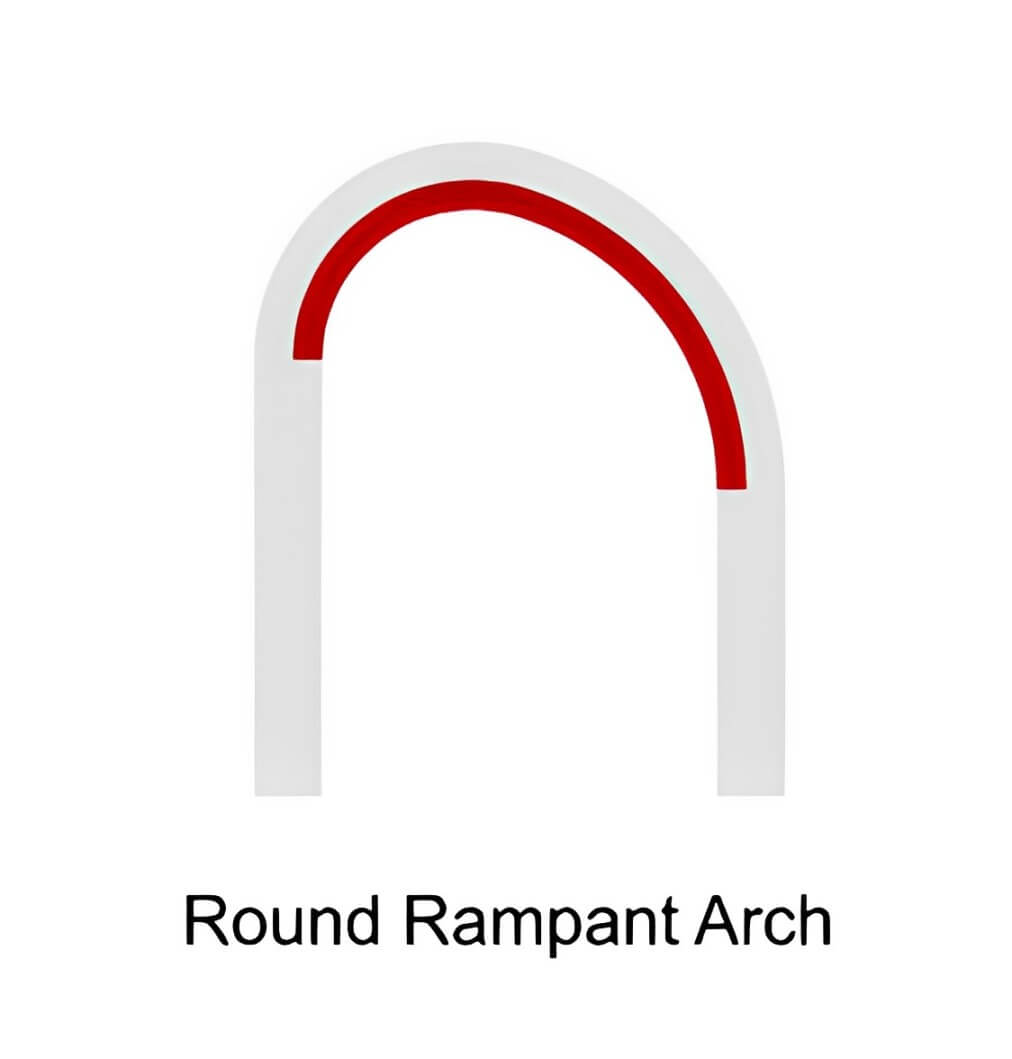
Structure and Design
The round rampant arch is composed of a curved segment that rises to a point on one side, creating an asymmetrical and dynamic appearance. This design is both functional and visually striking, making it a popular choice for bridges and doorways.
Functionality in Architecture
The round rampant arch is often used in bridges and aqueducts, where its asymmetrical design allows for greater flexibility in construction. It can also be found in many Gothic cathedrals, where it adds a sense of movement and drama to the structure.
12. Four-Centered Arch
The four-centered arch is a complex and sophisticated design that features four distinct curves. This arch is often associated with Tudor architecture, where it adds a sense of refinement and elegance to the structure.
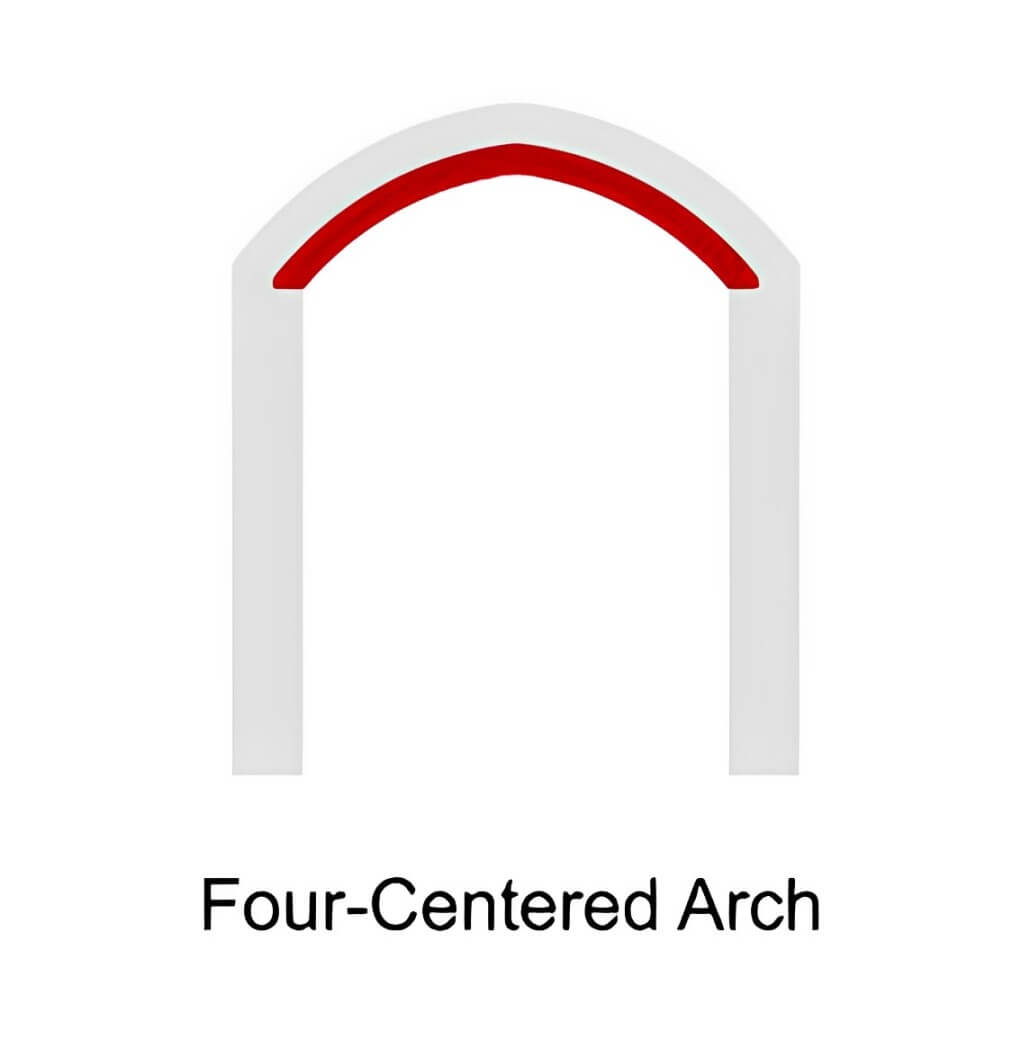
Structure and Design
The four-centered arch is composed of four separate arcs, creating a smooth and continuous curve. This design is both intricate and functional, making it a popular choice for windows and doorways.
Historical Usage
The four-centered arch is a defining feature of Tudor architecture, where it can be found in many famous buildings, such as Hampton Court Palace. This arch design is also used in Islamic architecture, where it adds a sense of grandeur and sophistication to the structure.
13. Tree-Centered Arch
The tree-centered arch is a unique and innovative design that features three distinct curves. This arch is often used in modern architecture, where it adds a sense of creativity and originality to the structure.
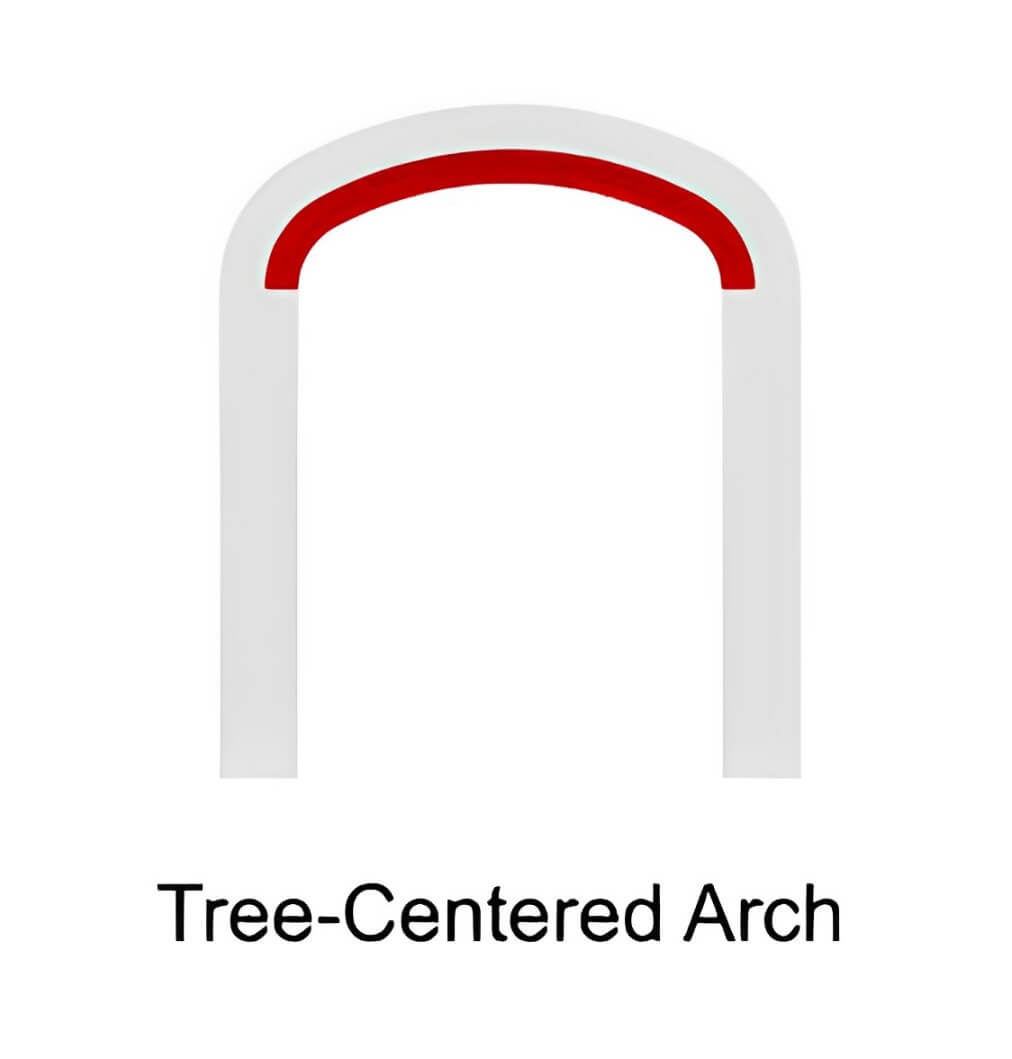
Structure and Design
The tree-centered arch is composed of three separate arcs, creating a smooth and continuous curve. This design is both visually striking and structurally sound, making it a popular choice for bridges and buildings.
How It Differs From Other Arches
The tree-centered arch is different from other arches in that it features three separate curves, rather than the traditional single or double curve. This design allows for greater flexibility and creativity in construction, making it a popular choice for modern architects.
14. Pseudo-Centered Arch
The pseudo-centered arch is a unique and unconventional design that features an off-center curve. This arch is often used in experimental and avant-garde architecture, where it adds a sense of unpredictability and intrigue to the structure.
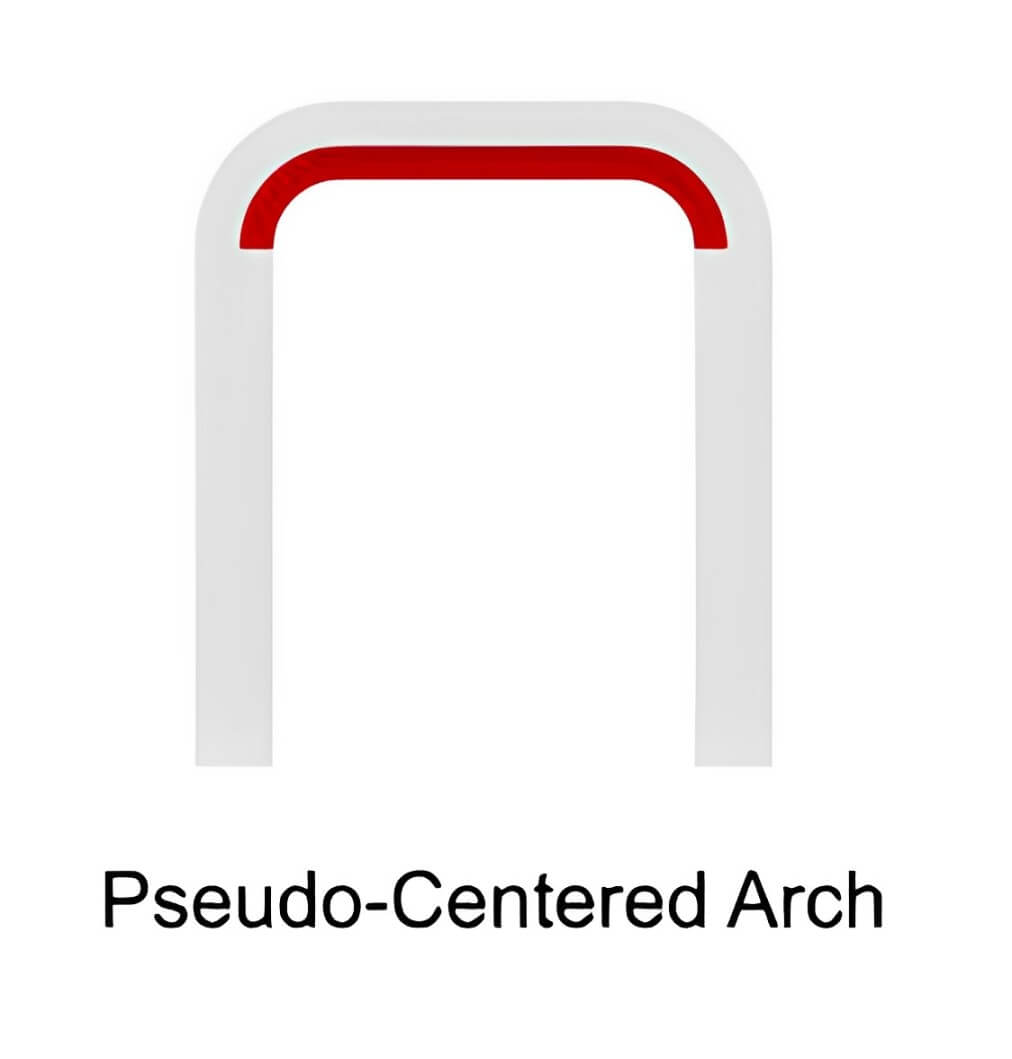
Structure and Design
The pseudo-centered arch is composed of a single curved segment that is offset from the center of the arch. This design creates a sense of imbalance and tension, making it a popular choice for modern and experimental architecture.
Where to See These Arches
Pseudo-centered arches can be found in many modern and experimental buildings, where they add a sense of uniqueness and originality to the structure. They are often used in art installations and avant-garde architecture, where they challenge traditional notions of balance and symmetry.
15. Tudor Arch
The Tudor arch is a classic and elegant design that is closely associated with British architecture. This arch is characterized by its low, wide shape, which gives it a sense of stability and strength.
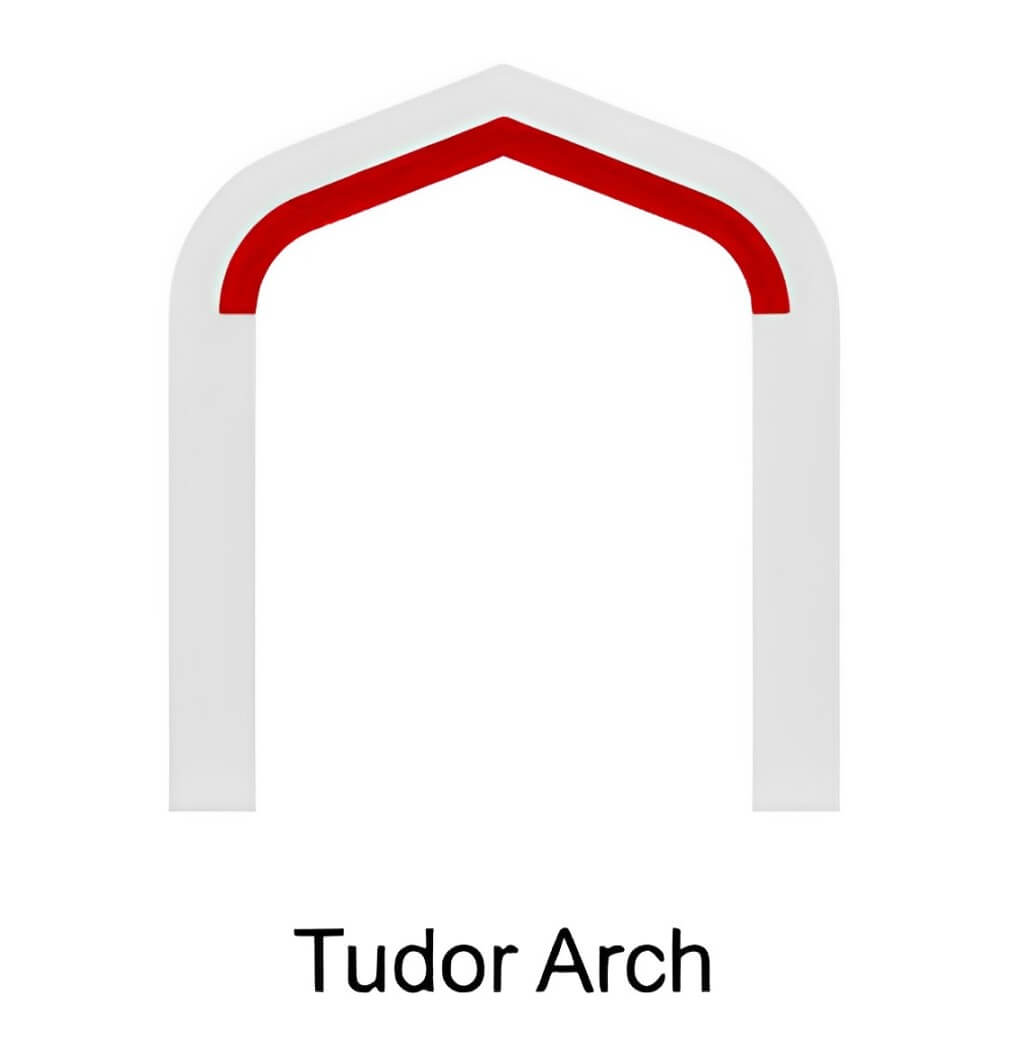
Structure and Design
The Tudor arch is composed of two straight sides that meet at a low, rounded point. This design is both functional and aesthetically pleasing, making it a popular choice for doorways, windows, and fireplaces.
Impact on British Architecture
The Tudor arch is a defining feature of Tudor architecture, where it can be found in many famous buildings, such as Hampton Court Palace. This arch design has also influenced many other styles of British architecture, where it adds a sense of refinement and elegance to the structure.
16. Trefoil Arch
The trefoil arch is a beautiful and symbolic design that features three overlapping arcs, creating a clover-like shape. This arch is often used in religious architecture, where it symbolizes the Holy Trinity.
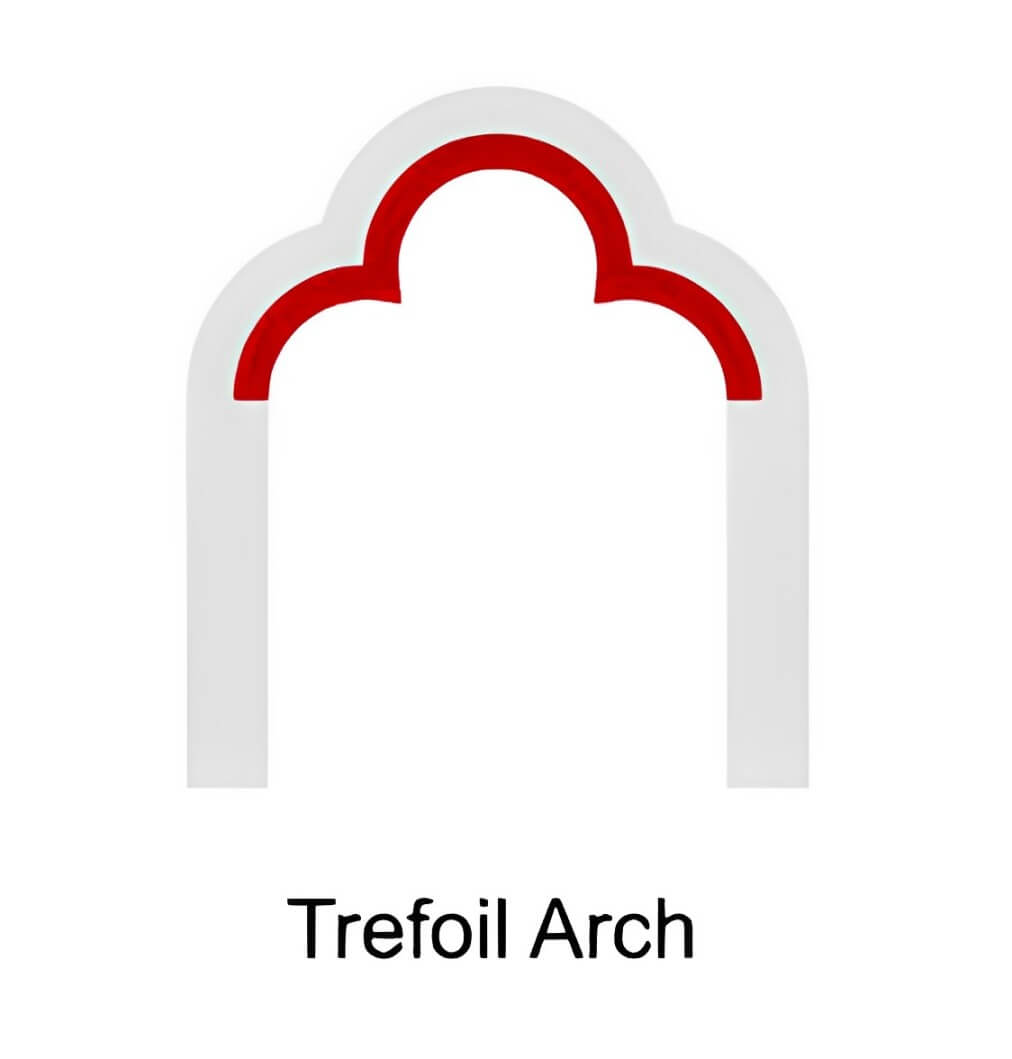
Structure and Design
The trefoil arch is composed of three intersecting arcs, creating a smooth and continuous curve. This design is both elegant and meaningful, making it a popular choice for churches and cathedrals.
Significance in Religious Architecture
The trefoil arch is often used in Christian architecture, where it represents the Holy Trinity. It can be found in many Gothic and Romanesque churches, where it adds a sense of reverence and spirituality to the structure.
Conclusion
The Enduring Legacy of Arches
Arches have been a fundamental part of architecture for thousands of years, and their legacy continues to influence modern design. From the simple round arch to the intricate ogee arch, these structures have allowed architects to create some of the most iconic and enduring buildings in history.
Impact on Modern Architecture
The impact of arches on modern architecture cannot be overstated. Their strength, versatility, and beauty continue to inspire architects today, and they remain a vital part of our built environment.
Future Trends
As architects continue to push the boundaries of design, we can expect to see even more innovative uses of arches in the future. Whether in traditional or modern contexts, arches will continue to play a crucial role in shaping the world around us.
